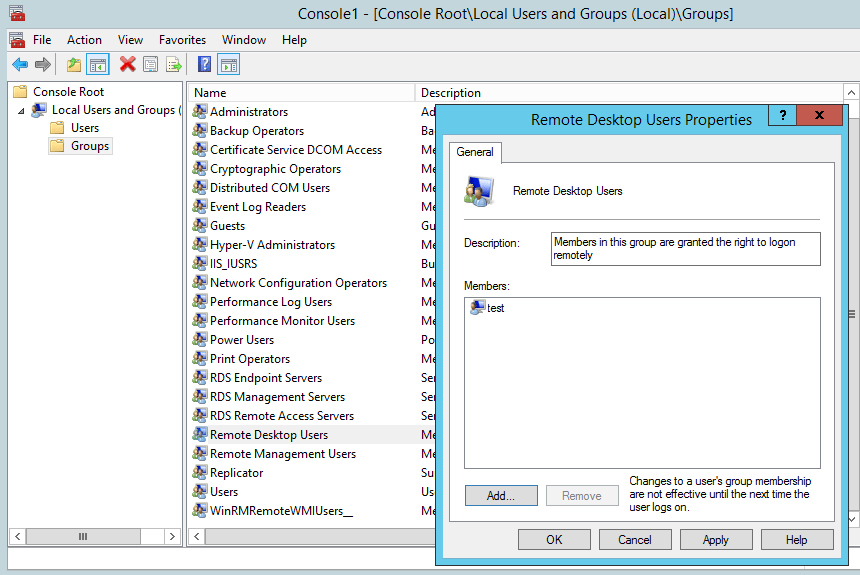

- DESKTOP GROUPS FOR WINDOWS HOW TO
- DESKTOP GROUPS FOR WINDOWS FOR WINDOWS 10
- DESKTOP GROUPS FOR WINDOWS WINDOWS 10
- DESKTOP GROUPS FOR WINDOWS DOWNLOAD
Select the list in the Personalize your background section, then select Picture. Right-click on the desktop you want to change. Via keyboard shortcut: Press the Win + Tab keys on the keyboard and select the virtual desktop you want to go to. Via Task View: Put the mouse cursor on this Task View button and choose the virtual desktop you want to access. If you're using a solid color or a slideshow, all your backgrounds will be the same. If you have multiple desktops, you can switch between them easily. Alongside the upcoming Office Lens UWP app, Microsoft is also working on bringing Outlook Groups to the desktop as a Universal Windows Platform app. You can also choose different backgrounds for each desktop if you're using a picture. The application account, managed at the domain level, must meet requirements for application account passwords, such as length and frequency of changes as defined in the Windows server STIGs. Recently, we reported that Microsoft is working on bringing Office Lens to the desktop. The requirement must be documented with the ISSO. Vendor documentation must support the requirement for having the user right. You would have the auto-expanding transparent windows, or any color you like, that would hold icons like containers. Click the + button at the bottom right to. When the group is empty, its name vanishes into wherever withered, obsolete tile. This will open the window as shown in the screenshot below. To eliminate a group, just drag all its tiles into other groups, one at a time. If a domain application account such as for a management tool requires this user right, this would not be a finding. To add your own group containers to the desktop, click the Nimi Places icon in the system tray. If any groups or accounts other than the following are granted the "Access this computer from the network" user right, this is a finding: These local policies will help to keep Windows. You should use local security policies in conjunction with Active Directory-level security policies that are applied at the site, organizational unit (OU) or domain level.
DESKTOP GROUPS FOR WINDOWS WINDOWS 10
Navigate to Local Computer Policy > Computer Configuration > Windows Settings > Security Settings > Local Policies > User Rights Assignment. There are a variety of best practices for using Group Policy settings with Windows 10 desktops. Verify the effective setting in Local Group Policy Editor. Microsoft Windows 10 Security Technical Implementation Guideĭetails Check Text ( C-22672r555356_chk ) He writes about ConfigMgr, Windows 11, Windows 10, Azure AD, Microsoft Intune, Windows 365, AVD, etc.Inappropriate granting of user rights can provide system, administrative, and other high level capabilities.Īccounts with the "Access this computer from the network" user right may access resources on the system, and must be limited to those that require it. His main focus is on Device Management technologies like SCCM 2012, Current Branch, and Intune. He is Blogger, Speaker, and Local User Group HTMD Community leader.
DESKTOP GROUPS FOR WINDOWS HOW TO
DESKTOP GROUPS FOR WINDOWS FOR WINDOWS 10
AVD Azure AD Dynamic Device Group for Windows 10 Multi-Session | Enterprise for Virtual Desktops Resources
DESKTOP GROUPS FOR WINDOWS DOWNLOAD
You can also validate Azure AD Dynamic Group Rules | Intune. Your messy desktop is no more after watching this tutorial & make a new look of your desktop, the download link is given below in the descriptionTable of con. You can check the members of the dynamic device group from the Members tab in the Azure AD Device group.

Next go to your desktop, right click on the shortcut, go to properties, advanced, check Run as Administrator. (viceOSType -eq "Windows 10 Enterprise for Virtual Desktops") Result Search cmd.exe in from start and then right click and choose Open file location, once there in Windows Explorer you can right click on the actual file (cmd.exe) and Send to Make Desktop Shortcut.


 0 kommentar(er)
0 kommentar(er)
